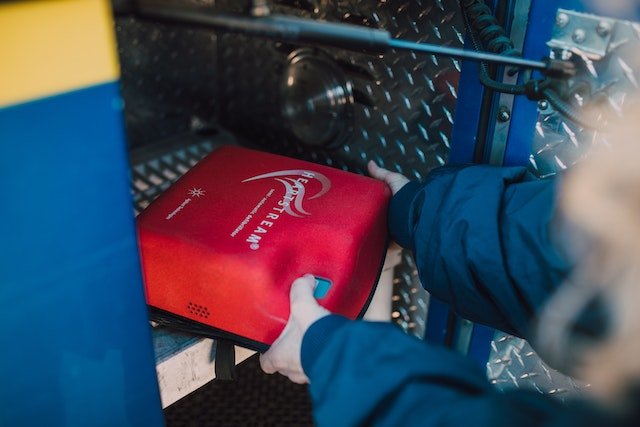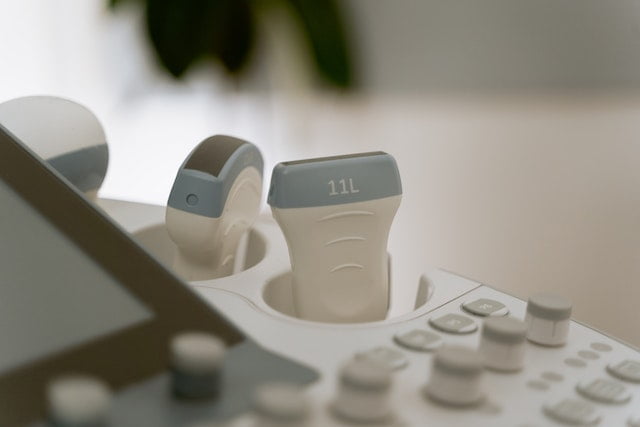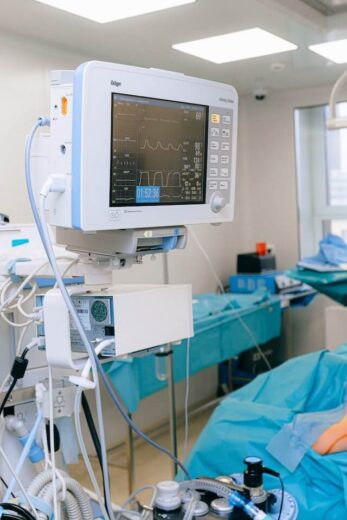Hospital facilities are equipped with the essential medical items necessary for the provision of good health care to patients. These include instruments employed for the purpose of correct diagnosis and treatment of the ailment, provision of surgical care as well as constant monitoring of the patient’s health state. All of these processes, when employed correctly, not only aid the process of recovery but also enhance the overall patient experience in a healthcare facility. Let us take a look at some of the common medical equipment used in hospitals.
Stretchers
The patients are needed to be moved from one place to another while being in a hospital. In this regard, stretchers equipped with oxygen cylinders, patient monitors as well as intravenous poles are a necessity. These stretchers are of different types depending upon the purpose of their use i.e. a trauma stretcher is specific for a patient afflicted with a physical trauma.
Patient monitors
Patient monitors are indispensable devices used for displaying the patient’s heart rate, blood pressure, temperature, and oxygen saturation level, among other parameters. These monitors are equipped with sensors that track the patient’s health state followed by displaying it after processing.
Electrosurgical units
Electrosurgical units (ESU) are devices that have a generator as well as electrodes attached to them. These electrodes produce high-frequency electrical current which is employed for the cutting of tissues during a surgical procedure.
Defibrillators
Defibrillators are devices that are employed for the management of life-threatening emergencies such as arrhythmias, a condition in which the heartbeat elevates or falls below the normal range due to the disturbed rhythmic activity of the heart. A defibrillator works by sending an electrical signal to the cardiac tissue which can restore the heart’s normal rhythm. In hospitals, different types of defibrillators are used which include:
- Automated external defibrillator (AED)
- Implantable cardioverter defibrillator (ICD)
- Wearable cardioverter defibrillator (WCD)

Anesthesia machines
Anesthesia machines or Boyle’s machines are employed for the transfer of anesthetic gases such as isoflurane, nitrous oxide, etc. to the patient at a continuous rate. The device delivers the anesthetic gases at a pre-set rate by maintaining a safe pressure. These machines are also affixed with screens and monitors that display the heart rate and oxygen saturation level of a patient.
ECG machines
Electrocardiography (ECG) is the process of monitoring the rhythmic activity of the heart. It is done by attaching electrodes at the patient’s chest and extremities which detect the electrical signal of the cardiac tissue. Once recorded, this signal is displayed as a graph electrocardiogram containing crusts and troughs to illustrate the systolic and diastolic states of the heart. ECG can give initial information regarding many kinds of cardiac disorders.

ECG machine
Fluid warmers
Fluid warmers are one of the common medical equipment used in hospitals in hospitals to warm the liquids which are intended to be administered into the patient’s body. Fluids such as blood are kept cold when in storage prior to use. At the time of use, these must be warmed enough to match the body’s normal temperature. Here, fluid warmers come in handy.
Ultrasound machines
Ultrasound is another method of imaging that uses ultrasound waves instead of X-rays or electrical signals. With the help of this technique, it has become easy to see the internal organs while making a diagnosis.

Ultrasound machine
X-ray machines
X-ray or radiographic machines are needed for the imaging of the patient’s body using electromagnetic radiation. This helps visualize the damage in case of an injury or trauma which can be evaluated by looking at the generated ‘shadowed’ image. Although there are plenty of ways to image the body, X-ray analysis is still widely used particularly while dealing with broken bones.

Physicians looking at a patient’s X-ray
Sterilizers
Hospitals are the places where the chances of acquiring an infection are higher in comparison to other facilities. This is due to the fact that the patients who visit a hospital usually come with infections the causative agents of which are then transferred to the medical equipment or into the air. Therefore, it is essential to sterilize all the items properly before use which can be done by sterilizers or autoclaves. Thus, by doing so, the chances of contamination are significantly reduced.
Ventilators
Patients facing difficulty breathing sometimes need respiratory assistance. Ventilators are thus used in such situations thus serving as life-critical systems. They work by circulating oxygen through the patient’s lungs and forcefully pulling carbon dioxide out, an action that mimics the normal respiratory process.
Mobility assistive equipment
Mobility assistive equipment such as walkers, cranes, and crutches are also needed for patients admitted to a hospital.
Surgical tables and stands
Surgical tables as well as stands are essential items in a hospital. These include:
- Instrument table
- Mayo stands
- Solution stands
- Surgical table
- Leg and arm support
Some of the other runny items used in a hospital include:
- Disposable gloves
- Bandages
- Surgical clamps
- Operating scissors
- Scalpel
- Headlights
- Lifts
- Wheelchairs, etc.
Summary
Common medical equipment used in hospitals comprises a lot of items that serve different purposes. When a patient is admitted to a hospital, the attending physician has to decide what tests or procedures she or he wants to run to evaluate or manage the patient’s health state. These tests usually include imaging of internal organs and bones which can be done by scans or X-rays. Similarly, special equipment is needed for the management of cardiac emergencies. All of these items, when employed, help raise the quality of life of a patient.

PhD Scholar (Pharmaceutics), MPhil (Pharmaceutics), Pharm D, B. Sc.
Uzma Zafar is a dedicated and highly motivated pharmaceutical professional currently pursuing her PhD in Pharmaceutics at the Punjab University College of Pharmacy, University of the Punjab. With a comprehensive academic and research background, Uzma has consistently excelled in her studies, securing first division throughout her educational journey.
Uzma’s passion for the pharmaceutical field is evident from her active engagement during her Doctor of Pharmacy (Pharm.D) program, where she not only mastered industrial techniques and clinical case studies but also delved into marketing strategies and management skills.
Throughout her career, Uzma has actively contributed to the pharmaceutical sciences, with specific research on suspension formulation and Hepatitis C risk factors and side effects. Additionally, Uzma has lent her expertise to review and fact-check articles for the Health Supply 770 blog, ensuring the accuracy and reliability of the information presented.
As she continues her PhD, expected to complete in 2025, Uzma is eager to contribute further to the field by combining her deep knowledge of pharmaceutics with real-world applications to meet global professional standards and challenges.








